Sanwa DCL3000R Handleiding
Sanwa
Meetapparatuur
DCL3000R
Bekijk gratis de handleiding van Sanwa DCL3000R (2 pagina’s), behorend tot de categorie Meetapparatuur. Deze gids werd als nuttig beoordeeld door 174 mensen en kreeg gemiddeld 4.6 sterren uit 87.5 reviews. Heb je een vraag over Sanwa DCL3000R of wil je andere gebruikers van dit product iets vragen? Stel een vraag
Pagina 1/2

3-2 Display
[4] DESCRIPTION OF FUNCTIONS
4-1 Power and function switch
Rotate this switch to turn the instrument power ON/OFF and to select a
measuring range.
4-2 Data Hold function
When the button is pressed, the indicator lights on the display HOLD HOLD
and the current value is held displayed. The displayed value does not change
even when the measured input varies. Pressing the button again exits the hold
mode and returns the instrument to the measurement mode.
• The mode can also be exited when the range is switched.HOLD
4-3 MAX/MIN function
When the button is pressed, the instrument enters one of the MAX MIN MAX/
MIN modes, which is switched in the following sequence by every further press
of the button.
Maximum value display ( lit) MAX Minimum value display ( lit) MIN Current
value display ( blinking) MAX MIN Maximum value display ( lit) MAX ....
To exit the mode, press and hold the button for more than MAX/MIN MAX MIN
2 sec.
• The mode is also exited when the range is switched.MAX/MIN
4-4 Backlight function
Press the button lights the backlight of the display panel. Pressing the button
again extinguishes the backlight.
4-5 Auto Power OFF (APO)
When the APO function is enabled, the display turns OFF automatically in
about 15 minutes after the last operation to reduce the power consumption.
The indicator lights on the display when this function is enabled. To turn the
display ON again, press any button.
• A small amount of current is flowing even when the display is turned OFF by
the APO function. Be sure to set the Range switch to OFF after finishing
measurements.
•
To disable the APO function, turn the instrument ON while holding the
HOLD
button
depressed. The APO function is disabled when the indicator is not lit.
4-6 Low Battery indication
The indicator lights on the display when the supply voltage from the internal
batteries drops below about 2.3 V. If this indicator lights, replace the batteries
(both) with new ones.
[5] MEASUREMENT PROCEDURE
5-1 Start-up inspection
Check the following items before starting measurement.
• Appearance: Check that the exterior of the instrument is not damaged by
dropping it.
• Check that the cable between the flexible CT and the cabinet is normal
without wire disconnection or cracking of the cable coating.
• Check that the low battery indicator is not lit. If it is lit, replace the
batteries with new ones.
• Check that the instrument and your hand are not wet.
* If nothing is shown on the display after turning the instrument ON, the batteries
may be exhausted.
5-2 AC amperage (ACA) measurement
Always wear insulation protective gear such as rubber-insulated gloves.
To avoid physical injury such as burns or electric shock, be sure to observe the
following instructions when using this instrument.
Pay special attention when measuring voltages of AC 33 Vrms (46.7 V
peak) or DC 60 V or more to avoid injury.
This clamp meter is designed for use with low-voltage circuitry. Never use it
on lines that exceed 600 V.
Do not apply a signal exceeding the maximum rated input (see 1-3 below).
Do not use the instrument if the main unit or cable is damaged or broken.
Do not use the instrument with the case or battery compartment cover removed.
Always wear insulation protective gear such as rubber-insulated gloves before
clamping or unclamping the instrument around/from a live-state conductor.
Be sure to check the range before each measurement.
Do not use the instrument if it or your hand is wet.
Do not attempt to repair or modify the instrument except to replace the battery.
Be sure to check the instrument before each use and inspect it at least once a year.
Always use this instrument exclusively indoors.
When measuring equipment containing a hazardous charged part, it is
required to wear protective gear for prevention of accidents. For details,
please follow your local and national safety standards.
To avoid compromising the protection function of this instrument, do not
use it in any way other than instructed in this manual.
[1] SAFETY PRECAUTIONS
Before use, read the following safety precautions.
This instruction manual explains how to use your DCL3000R. This digital clamp
meter is designed for use with low-voltage circuitry. Before use, please read this
manual thoroughly. After reading it, keep it together with the product so you can
refer to it when necessary.
If this product is not used as specified in this manual, its protection function may
be compromised.
The instructions given under the headings of WARNING and CAUTION must be
followed to prevent accidental burn and electric shock.
1-1 Explanation of Warning Symbols
The meanings of the symbols used in this manual and attached to the product
are as follows:
: Very important instructions for safe use.
The warning messages are intended to prevent accidents to operating
personnel such as burn and electric shock.
The caution messages are intended to prevent incorrect handling which
may damage the product.
: Symbol requesting warning or reference to the instruction manual.
: Symbol requesting caution or risk of electric shock.
: Double insulation or reinforced insulation
:
Symbol inhibiting clamping or unclamping around/from a conductor in the live
state without wearing insulation protective gear such as rubber-insulated gloves.
1-2 Warning Messages for Safe Use
WARNING
1-3 Overload Protection Input
Input terminal Maximum rated input Maximum overload
protection input
Flexible CT AC 3000 A AC 5000 A
[2] APPLICATION AND FEATURES
2-1 Applications
This instrument is a true rms AC clamp meter designed in compliance with
IEC61010-1 CAT Ⅳ 600 V. It is capable of measuring AC current up to 3000 A.
It is suitable for measuring the current of electrical lines, appliances power
supply facilities operating on low voltages of no more than 600 V.
2-2 Features
• Safety design in compliance with the IEC61010-1.
• Flexibility facilitating conductor clamping even in narrow spaces.
• Air-core coil for weight reduction.
• Wide measuring range: 30 A / 300 A / 3000 A
• True rms display.
• Auto power OFF (approx. 15 min.), which can also be disabled.
• MAX/MIN modes for holding the maximum and minimum values.
• Backlit display panel.
Measurement categories (overvoltage categories)
CAT I :
Secondary cable runs from a power supply transformer connected to a wall socket.
CAT II :
Primary cable runs of power-consuming equipments from a wall socket.
CAT III:Primary cable runs of equipments directly connected to a distribution
board and cable runs from a distribution board to wall sockets.
CAT IV:Cable runs from an incoming line to a distribution board.
[3] NAMES OF PARTS
3-1 Overall
In some cases, repair and transportation cost may become higher than the
price of the product. Please contact Sanwa authorized agent / service
provider in advance. The minimum retention period of service functional
parts is 6 years after the discontinuation of manufacture. This retention
period is the repair warranty period. Please note, however, if such functional
parts become unavailable for reasons of discontinuation of manufacture,
etc., the retention period may become shorter accordingly.
4) Precautions when sending the product to be repaired
To ensure the safety of the product during transportation, place the product
in a box that is larger than the product 5 times or more in volume and fill
cushion materials fully and then clearly mark “Repair Product Enclosed” on
the box surface. The cost of sending and returning the product shall be
borne by the customer.
7-3 SANWA Website
http://www.sanwa-meter.co.jp
E-mail: exp_sales@sanwa-meter.co.jp
[8] SPECIFICATIONS
8-1 General specifications
Operation method Double integration
AC measuring method TRUE RMS AC coupling
Display 3150 counts f.s.
Sampling rate Approx. 2 times/sec.
Over-range "- O L -" displayed on the numeric display
Range switching and
measurement range
Manual range
AC 30.00 / 300.0 / 3000 A
Low battery indication The indicator lights on the display when the
supply voltage from the internal batteries drops below
about 2.3 V.
Flexible CT length Approx. 485 mm
Flexible CT diameter Approx. ø8.5 mm
Clamped conductor diameter Max. approx. ø150 mm
Cable length Between exible CT and cabinet: Approx. 1.8 m
Operating environmental
conditions
Altitude no more than 2000 m, indoor use,
environmental pollution degree II
Accuracy-guaranteed
temperature/humidity ranges
23 ± 5 °C, no more than 80 %RH
(without condensation)
Operating temperature/humidity
ranges
5 to 40 °C, no more than 80 %RH
(without condensation)
Storage temperature/humidity
ranges
-10 to +50 °C, no more than 80 %RH
(without condensation)
Power supply “AAA”-size alkaline battery 1.5 V (LR03) x 2
Auto Power OFF The display turns OFF in about 15 minutes after the
last operation.
Power consumption Approx. 20 mW TYP.
Continuous operation duration Approx. 130 hours (Backlight extinguished)
Dimensions and mass 120(H) × 70(W) × 26( D) mm, approx 300 grams
(including batteries)
Safety standards IEC61010-1 CAT Ⅳ, 600 V,
IEC61010-2-030, IEC61010-2-032
EMC Directive IEC61326-1
Accessories Instruction manual, carrying pouch (C-CL3000)
8-2 Measuring ranges and accuracies
• Accuracy-guaranteed temperature/humidity ranges: 23 ± 5 °C, no more than
80 %RH (without condensation)
• Accuracy-guaranteed frequency range: 45 to 500 Hz, AC sine wave
• Accuracy: Each range
-
±(3.0 % of rdg + 5 dgt) .
Assuming that the measured conductor is located on the center of the circle
formed by the flexible CT.
rdg: reading. dgt: digits (lowest column)
• Effective value range: 5 % to 100 % of each range
Values below 150 counts of each range are not covered by the accuracy
guarantee.
• Crest factor (CF): Full scale CF < 1.6, half scale CF < 3.2.
• Temperature coefficient: At temperatures below 18 °C and above 28 °C, add
Accuracy x 0.1 per degree.
• Addition of errors due to conductor location
ø 150
ø 100
ø 50
Distance from center Addition to accuracy
Radius 25 mm (ø50) ± 1.0 %
Radius 50 mm (ø100) ± 2.0 %
Radius 75 mm (ø150) ± 3.0 %
Specifications and external appearance of the product described above may
be revised or modified without prior notice.
[6] MAINTENANCE
6-1 Maintenance and inspection
1) Appearance:
• Check that the exterior of the instrument is not damaged by dropping it.
2) Cable between flexible CT and cabinet:
•
Check that the cable is normal without coating damage or exposed conductor.
3) Flexible CT:
•
Check that the white part inside the flexible CT is not exposed due to coating damage.
If any of the troubles above is found, do not use the instrument and call for service.
6-2 Calibration and Inspection
For more information, please contact Sanwa's authorized agent/distributor
service provider, listed in our website. See section 7-3.
6-3 Storage
1. The panel and case are not resistant to volatile solvent and must not be
cleaned with thinner or alcohol.
2. The panel and case are not resistant to heat. Do not place the instrument
near heat-generating devices (such as a soldering iron).
3.
Do not store the instrument anywhere it may be subject to vibrations or could fall.
4. When storing the instrument, avoid hot, cold or humid locations, locations
exposed to direct sunlight, or locations where condensation is anticipated.
5. When the instrument is not going to be used for an extended time, be
sure to remove the batteries.
CAUTION
6-4 Battery Replacement
• The battery loaded at the factory is a monitor battery, so their service life may
be shorter than that of a brand-new battery. A monitor battery is a type of
battery used to check the functions and performance of a product.
• To prevent the risk of electric shock, do not remove the battery compartment
cover while the flexible CT is clamped around the measured conductor.
WARNING
[7] AFTER-SALE SERVICE
7-1 Warranty and Provision
Sanwa offers comprehensive warranty services to its end-users and to its
product resellers. Under Sanwa’s general warranty policy, each instrument is
warranted to be free from defects in workmanship or material under normal use
for the period of one (1) year from the date of purchase.
This warranty policy is valid within the country of purchase only, and applied
only to the product purchased from Sanwa authorized agent or distributor.
Sanwa reserves the right to inspect all warranty claims to determine the extent
to which the warranty policy shall apply.
Note that the accuracy of the instrument is warranted for one (1) year while the
provided articles other than the instrument itself are not covered by the
warranty.
1.
A failure due to improper handling or use that deviates from the instruction manual.
2. A failure due to inadequate repair or modification by people other than Sanwa
service personnel.
3. A failure due to causes not attributable to this product such as fire, flood and
other natural disaster.
4. Non-operation due to a discharged battery.
5.
A failure or damage due to transportation, relocation or dropping after the purchase.
7-2 Repair
Customers are asked to provide the following information when requesting
services:
1. Customer name, address, and contact information
2. Description of problem
3. Description of product configuration
4. Model Number
5. Product Serial Number
6. Proof of Date-of-Purchase
7. Where you purchased the product
Please contact Sanwa authorized agent / distributor / service provider, listed in
our website, in your country with above information. An instrument sent to Sanwa
/ agent / distributor without those information will be returned to the customer.
Note:
1) Check the following items again before calling for service.
• Remaining power of the internal batteries and the polarity of inserted
batteries.
2) Repair during the warranty period:
The failed instrument will be repaired in accordance with the conditions
stipulated in “7-1 Warranty and Provision”.
3)
Repair after the warranty period has expired:
1.
2.
3.
4.
5.
6.
7.
8.
9.
10.
11.
12.
13.
AC measurement
MAX MIN Hold Data Hold
Unit
Low battery indication Digit and decimal point
Auto power save
mode
1. It is hazardous to use the flexible CT with a conductor in the live state. Be
sure to wear insulation protective gear such as rubber-insulated gloves
before clamping or unclamping the flexible CT.
2. Do not use the instrument if the coating of the flexible CT is damaged and
the internal white part is exposed.
3. Do not use the instrument with a line with voltage to ground over 600 V.
WARNING
1. To reduce the measurement errors, position the measured conductor
(wire) as close as possible to the center of the flexible CT.
2.
Always clamp around a single wire at a time. Correct current
measurement
is impossible if multiple wires, for example two single-phase and three
3-phase lines, a cable with multiple conductors or parallel cords are
clamped.
3. Correct measurement may sometimes be impossible near a source of
strong magnetic field, such as a transformer or high-current path, a
source of electromagnetic wave or a charged object.
CAUTION
1. The section is very important for safety. Read and understand the
following instructions fully and maintain your instrument properly.
2. For securing safety and accuracy, inspect and calibrate the instrument at
least every year.
WARNING
1. Using a Phillips screwdriver, remove the fixing screw
(x 1) from the battery compartment cover.
2. Replace both of the two batteries in the battery holder
with new ones by taking care of the polarity.
3. Place the battery compartment cover and tighten the
fixing screw.
Flexible CT
CT connection/
disconnection section
HOLD button
MAX MIN button
Backlight button
Power and function switch
Display
1.Set the Range switch to the desired
measuring range. If the measured current
value is unknown, begin with the 3000 A
range and decrease it sequentially as
required.
2.Clamp the flexible CT around the conductor
so that this is positioned vertically on the
center of the flexible CT.
3.Read the value on the display.
− 3 − − 4 −− 2 −− 1 −
Product specificaties
| Merk: | Sanwa |
| Categorie: | Meetapparatuur |
| Model: | DCL3000R |
Heb je hulp nodig?
Als je hulp nodig hebt met Sanwa DCL3000R stel dan hieronder een vraag en andere gebruikers zullen je antwoorden
Handleiding Meetapparatuur Sanwa

6 Januari 2024

5 Januari 2024

5 Januari 2024

29 December 2023

29 December 2023

28 December 2023

28 December 2023

27 December 2023

27 December 2023

27 December 2023
Handleiding Meetapparatuur
- DriveTest
- Mitutoyo
- Nedis
- Blackmagic Design
- Monacor
- Helvi
- BJZ
- Draper
- Apollo Ultrasonic
- Microlife
- Greisinger
- Wiha
- Weltron
- Circutor
- Phoenix Contact
Nieuwste handleidingen voor Meetapparatuur
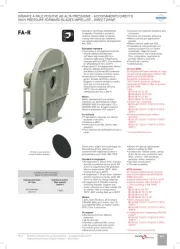
16 September 2025
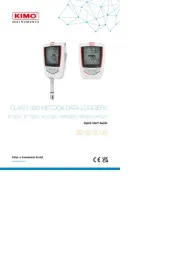
16 September 2025
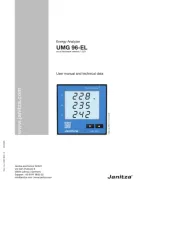
16 September 2025
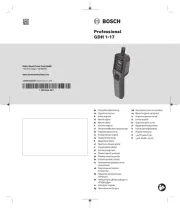
15 September 2025
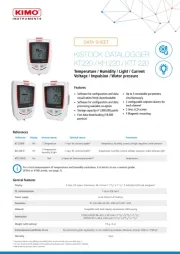
15 September 2025
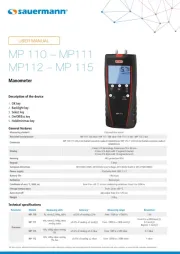
15 September 2025
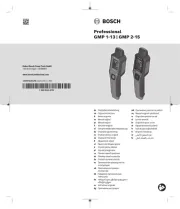
15 September 2025
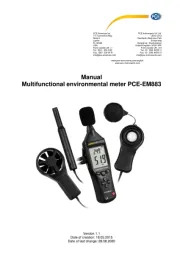
15 September 2025
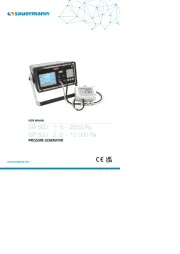
15 September 2025
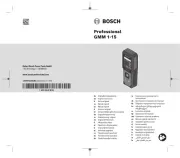
15 September 2025